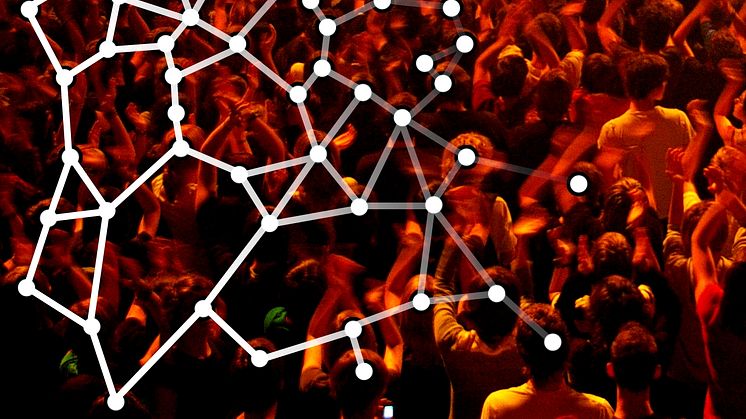
Press release -
Rallies, Protests, and Black Friday: Physics finds dangers hiding in plain sight
Inspired by the way people move at heavy metal concerts, an international team of researchers from Uppsala University and Harvard University have learned how to spot danger zones in mass gatherings before disaster strikes.
Publishing online in the journal Physical Review Letters Nov. 23rd, Uppsala University’s graduate student Arianna Bottinelli, and professor in applied mathematics David Sumpter, have developed computational tools to predict large-scale collective motion in simulated mass gatherings.
The team started with simulated crowds so they could reliably keep track of everyone’s position. “From this data, we’re able to predict the most risky collective motions that naturally arise in a dense shoulder-to-shoulder crowd,” says first author Bottinelli, who will defend her PhD thesis in applied mathematics on the 25th of November.
Sumpter adds, “The next step is to apply these techniques to real-time video data. If we can use computer vision to track people, then our analytical tools can warn event planners of potential hazards before they arise.”
Overwhelmingly, mass gatherings are held without incident. But sometimes things go wrong. People can be trampled or asphyxiated by crushing pressures generated by the crowd itself. These types of collective motion have been previously studied, but the new physics-based insights in this work provide an explanation for how these disasters occur in the first place.
Bottinelli, who lead the research, describes it like this: “It all comes down to way people gather into a randomly packed group. Physical body-to-body contacts are the foundation for potentially dangerous collective motion. Our work shows how to identify the emergent risks based on which people are touching each other.”
The project started as a study in the way people “dance” at heavy metal concerts. These “mosh pits” forcefully separate the crowd, creating areas near the stage where the crowd is densely packed.
“We were staring at the concert data when we realized there were direct similarities with rallies, protests, and Black Friday sales events,” said Dr. Silverberg, postdoctoral fellow at Harvard University, who has been collaborating on this work. “The more we dug, the richer the physics became. Pretty soon we found ideas from material science and field theory could be applied directly to human crowds in extreme situations,” he adds.
The researchers noted that awareness is the key to safety. With the upcoming Black Friday shopping holiday in America and the general increase in protest events across the globe, there are increasingly hidden dangers in crowds. The team’s conclusions and suggestion to the public is to “keep an eye on your surroundings – if you’re packed densely, then there’s an inherent risk, and the best way to protect yourself and others is to spread out and move to an area with more physical space” the team concluded.
The research, “Emergent structural mechanisms for high-density collective motion inspired by human crowds” was supported by the Centre for Interdisciplinary Mathematics in Uppsala University, Sweden.
Watch a film on Youtube about the findings in the study:https://youtu.be/nAiGUZQPJJw
For more information, please contact:
Arianna Bottinelli (Sweden), Phone: +46 708236394, E-mail: AriannaBottinelli@gmail.com
Jesse Silverberg (USA), Phone: 781-964-7911, E-mail: Jesse.Silverberg@wyss.harvard.edu
Related links
Topics
Uppsala University -- quality, knowledge, and creativity since 1477
World-class research and outstanding education of global benefit to society, business, and culture.
Uppsala University is one of northern Europe's highest ranked academic institutions. www.uu.se
